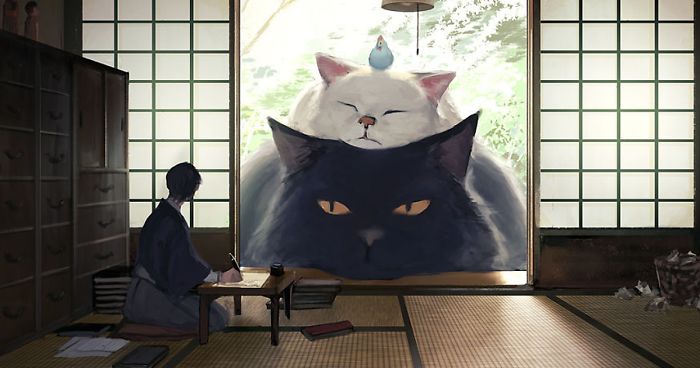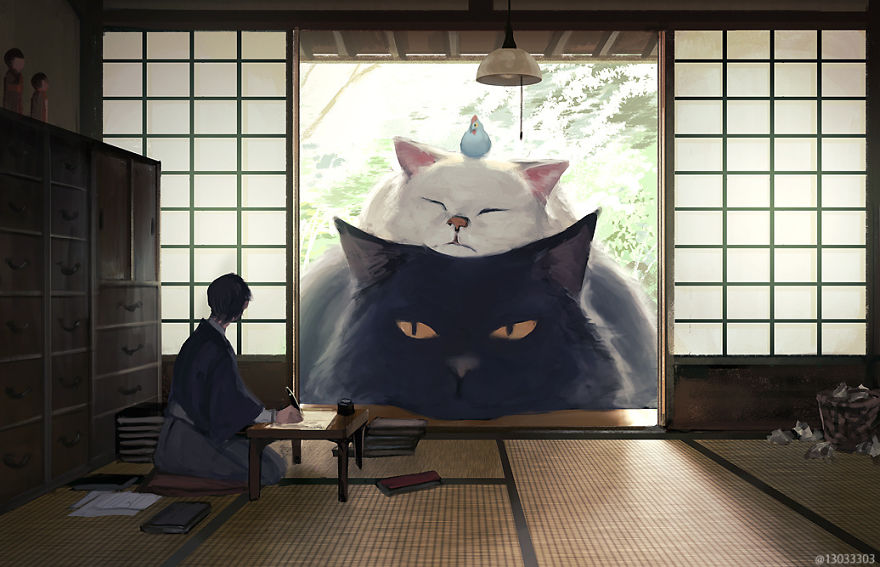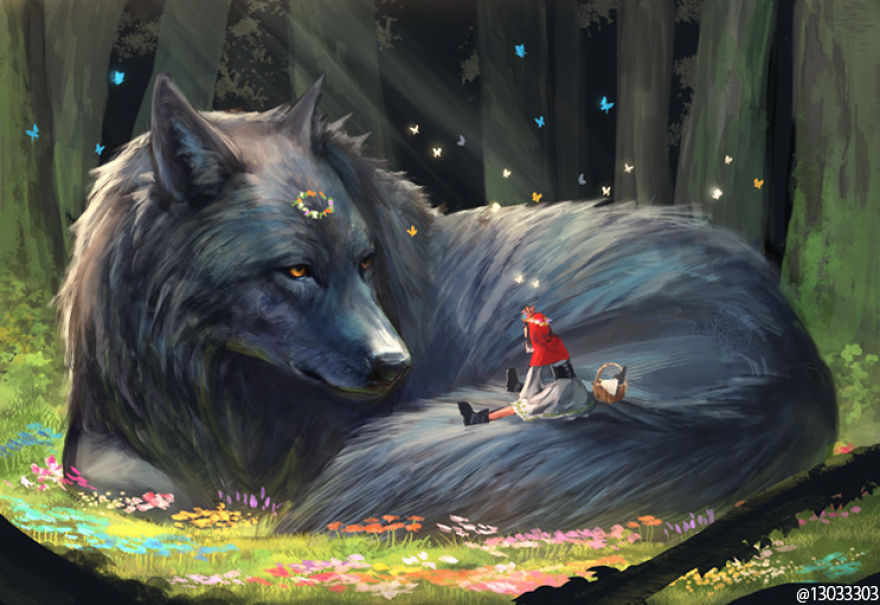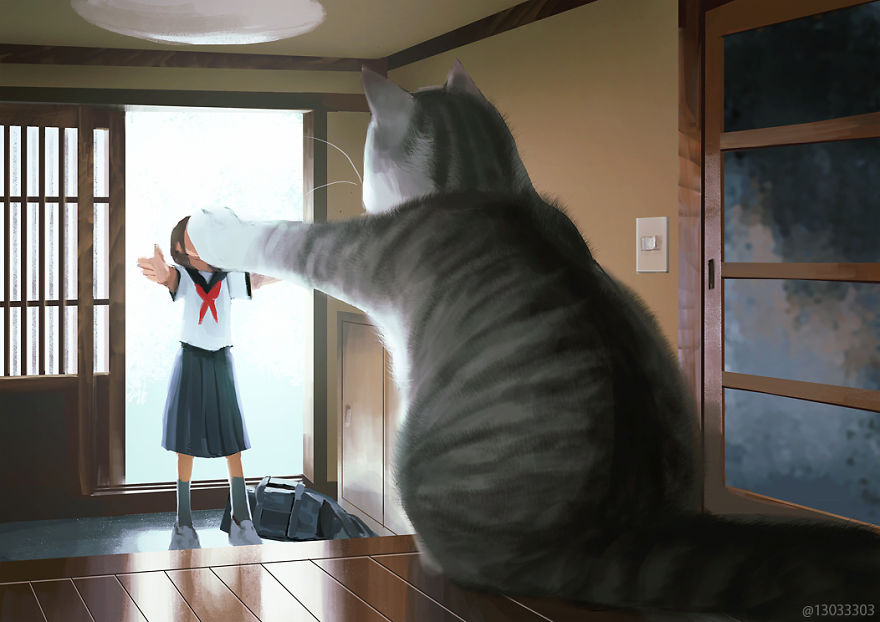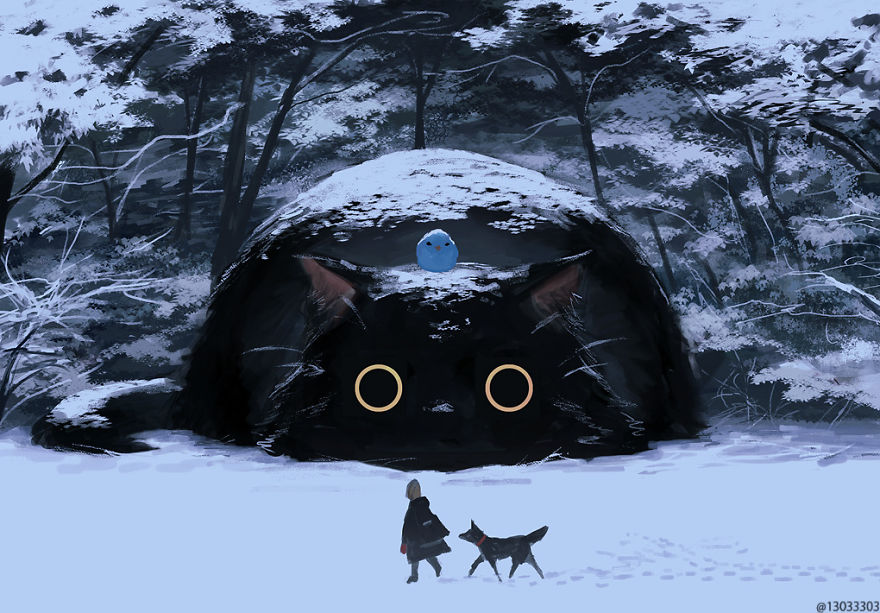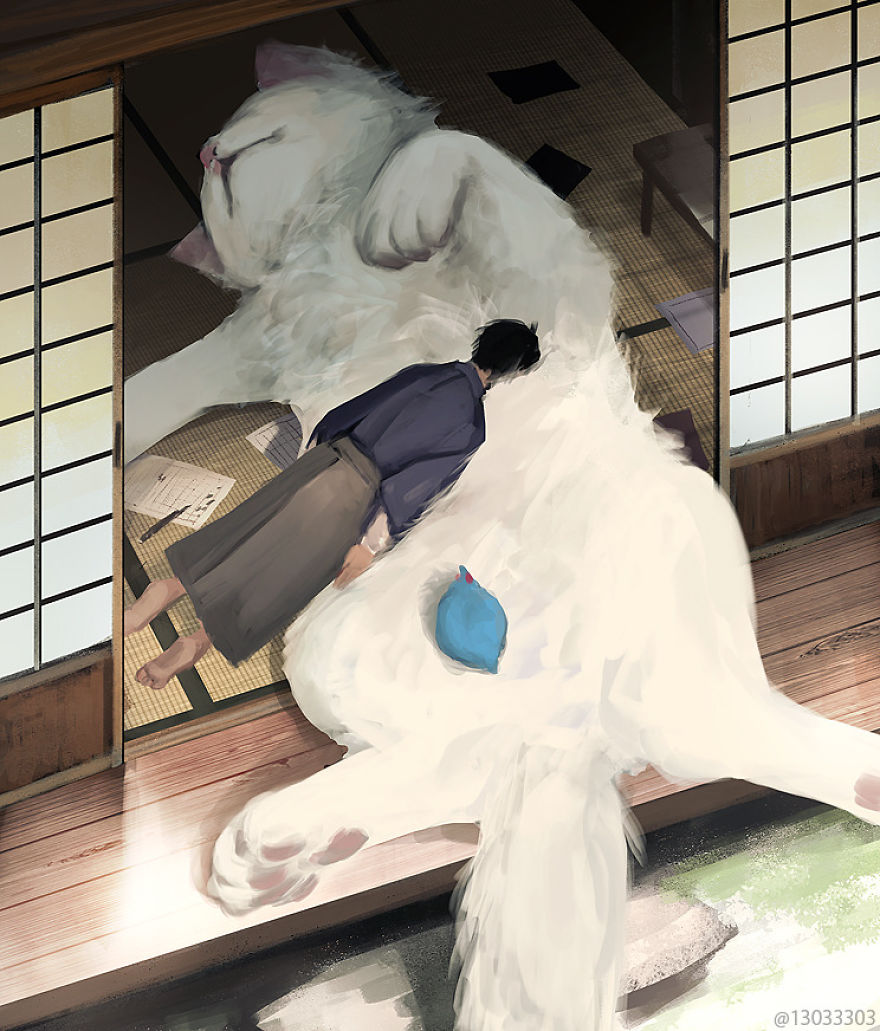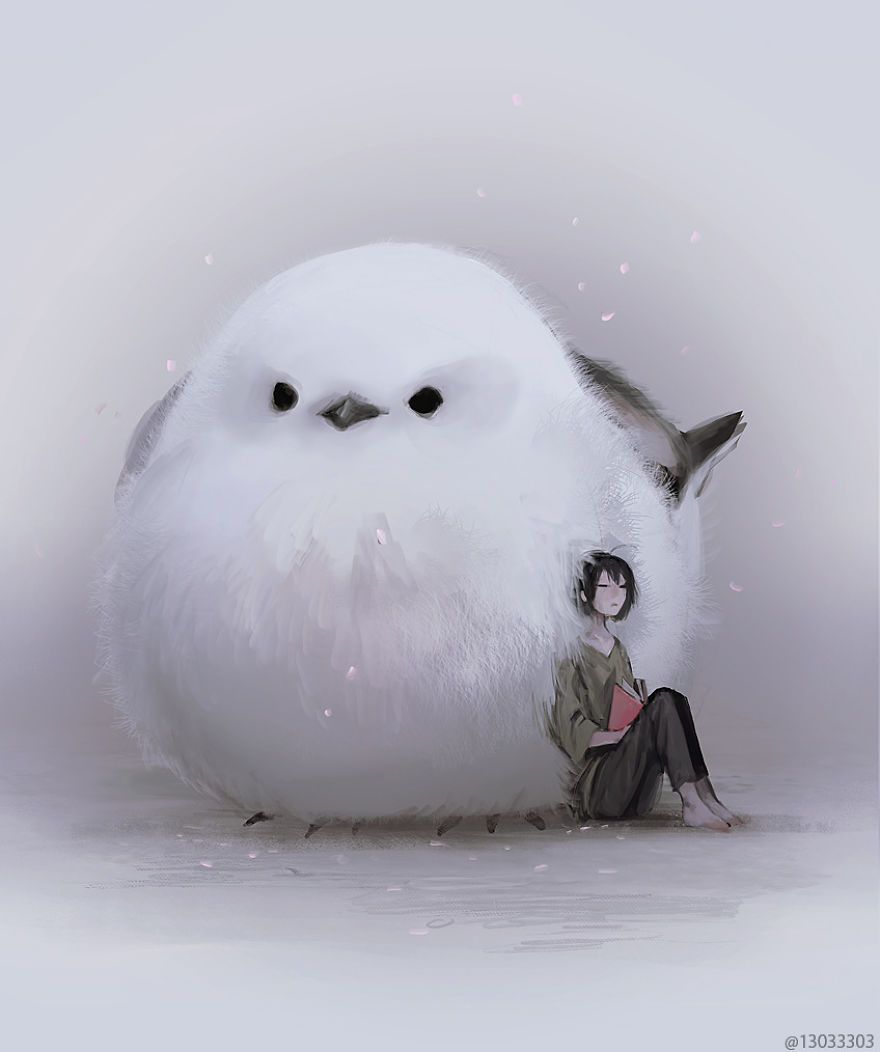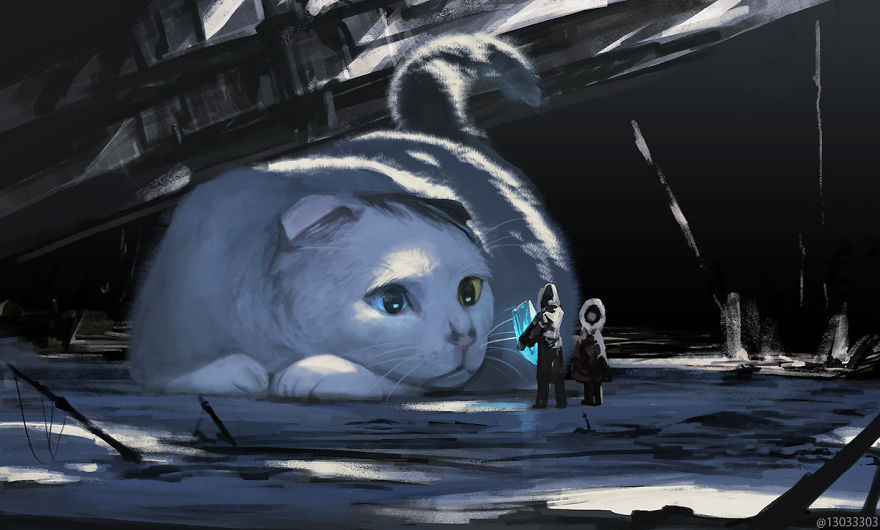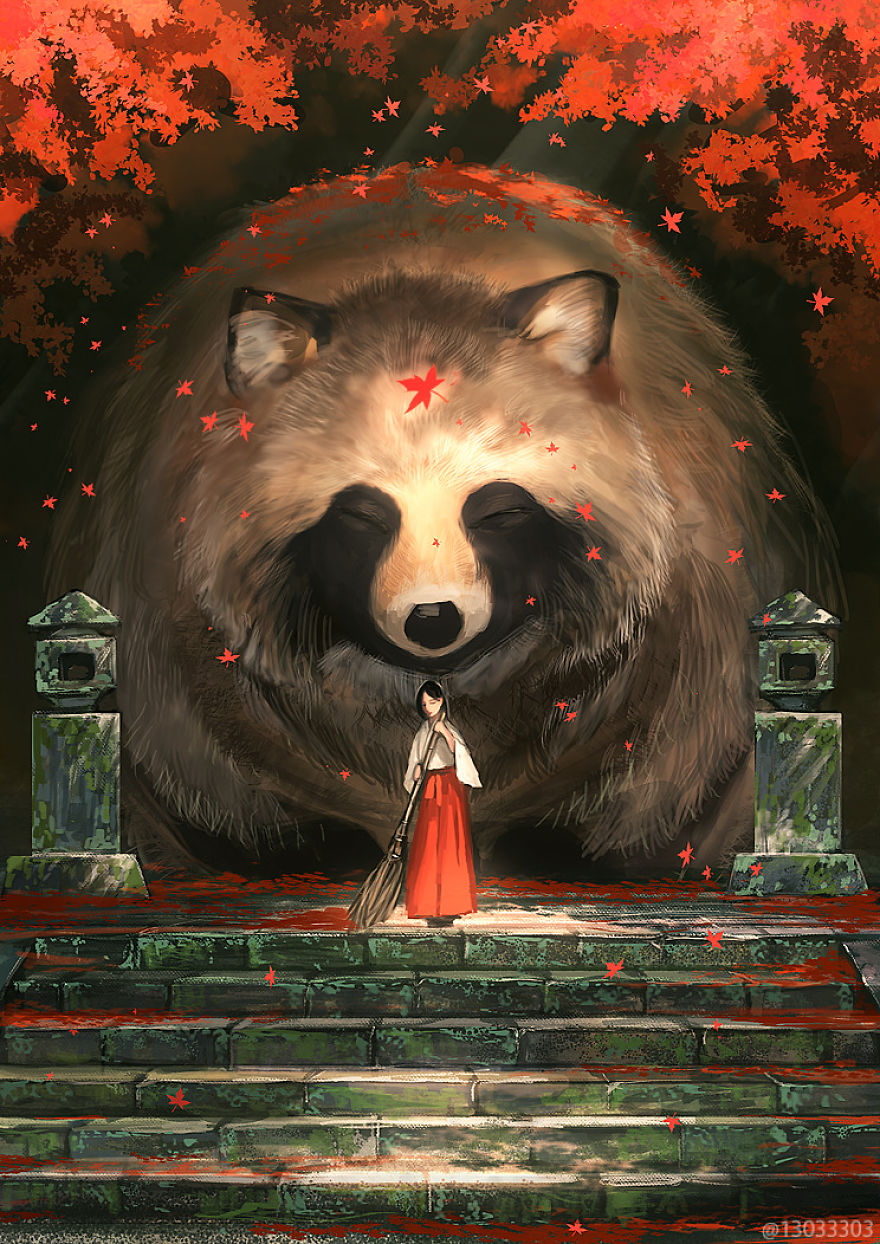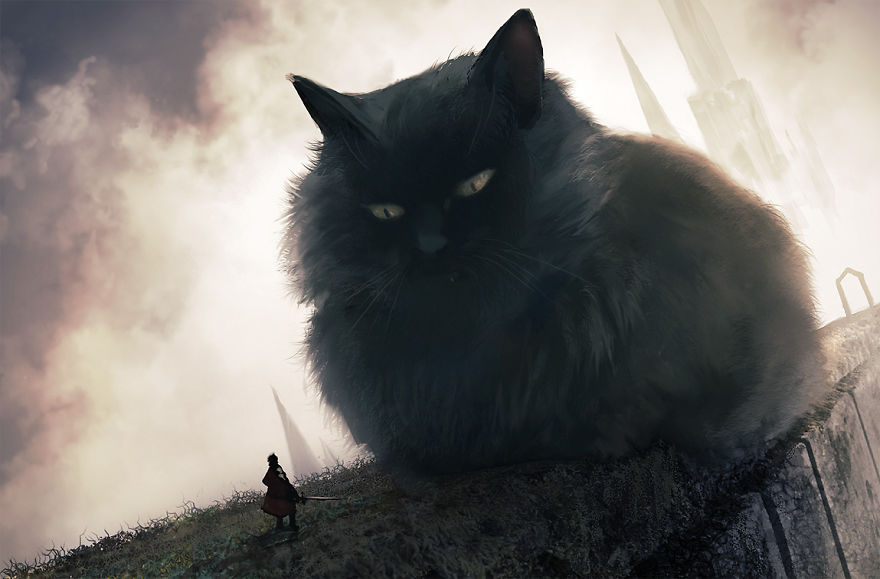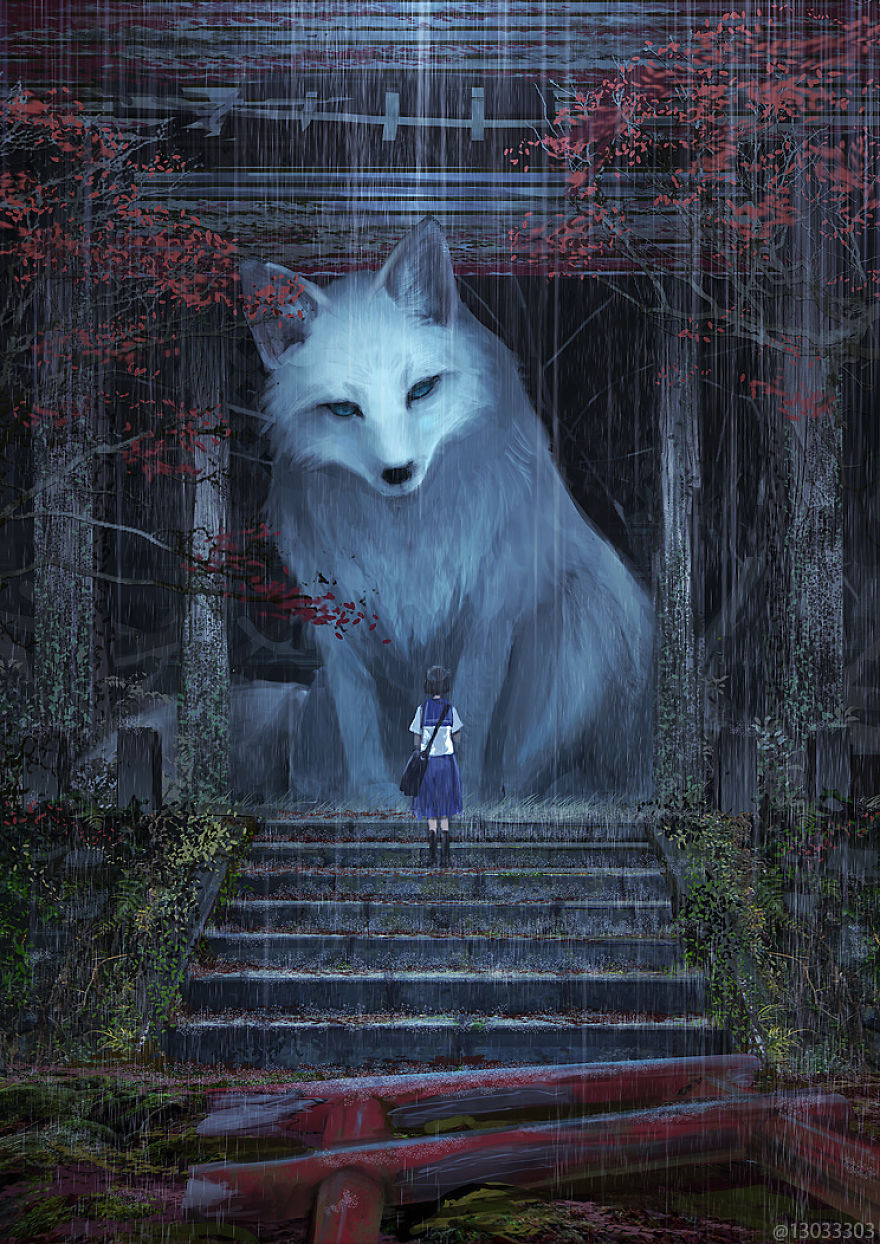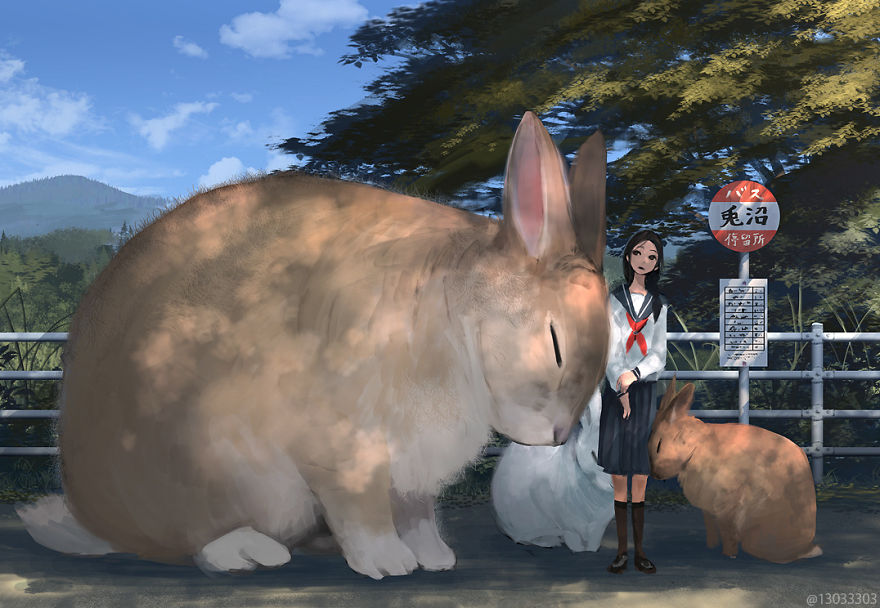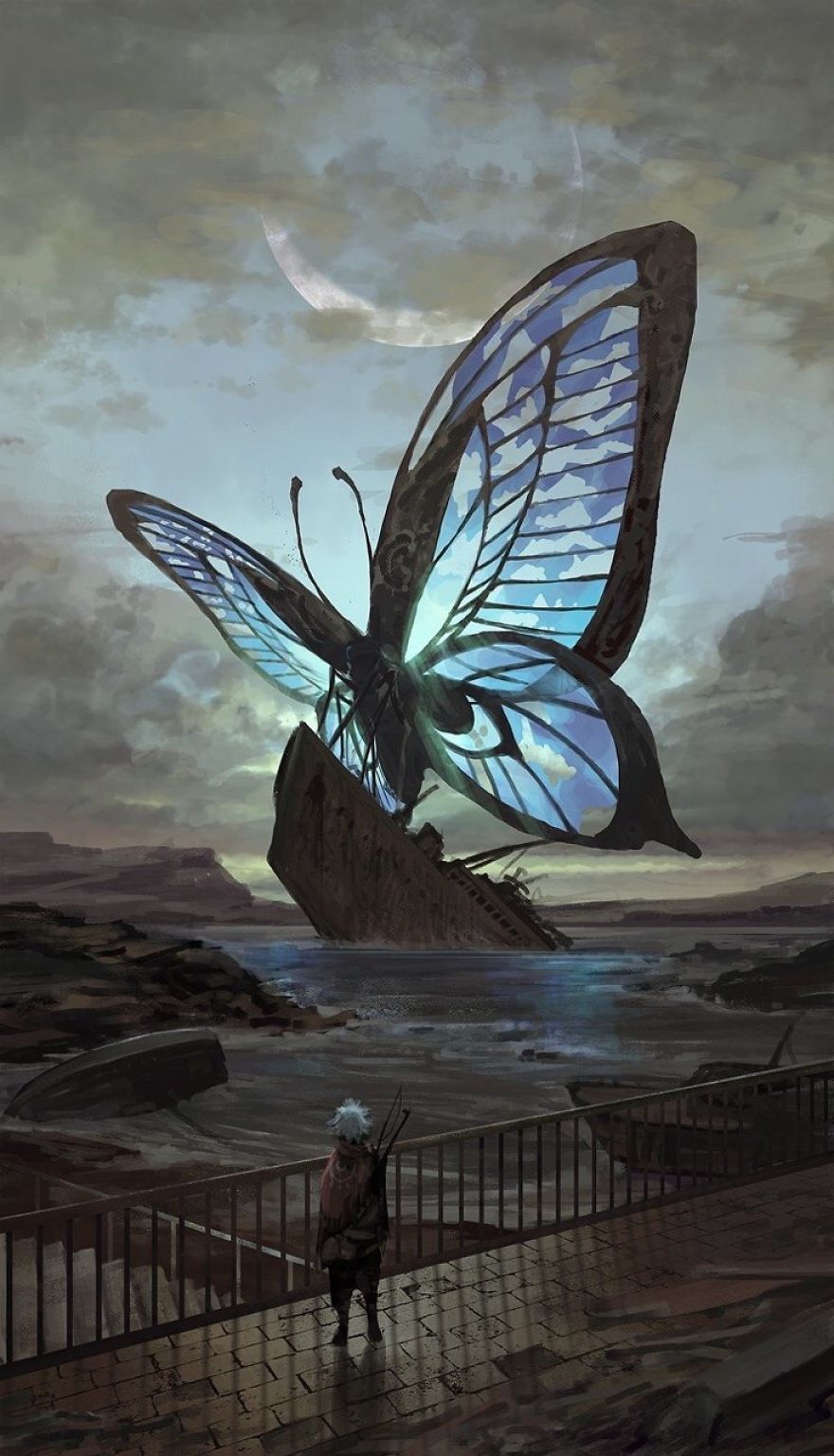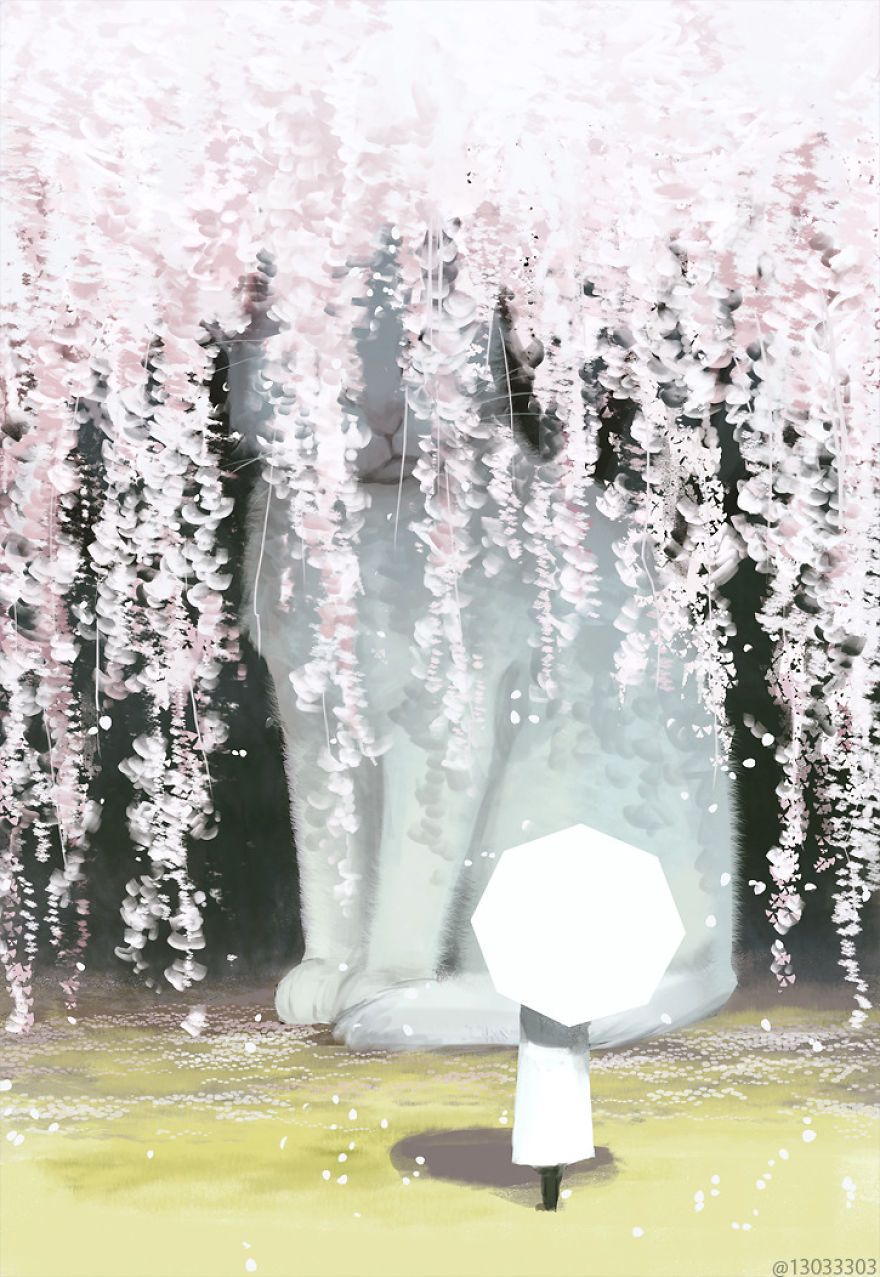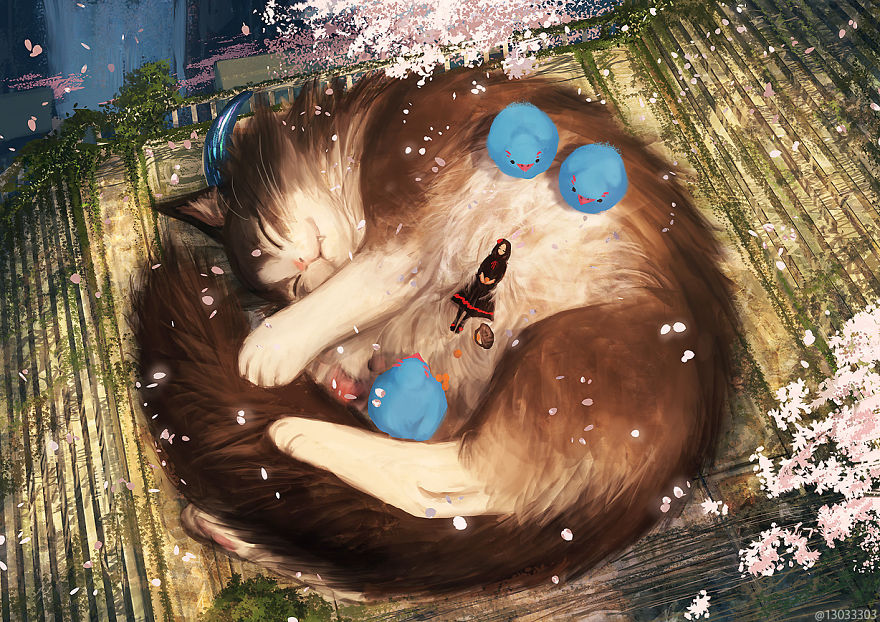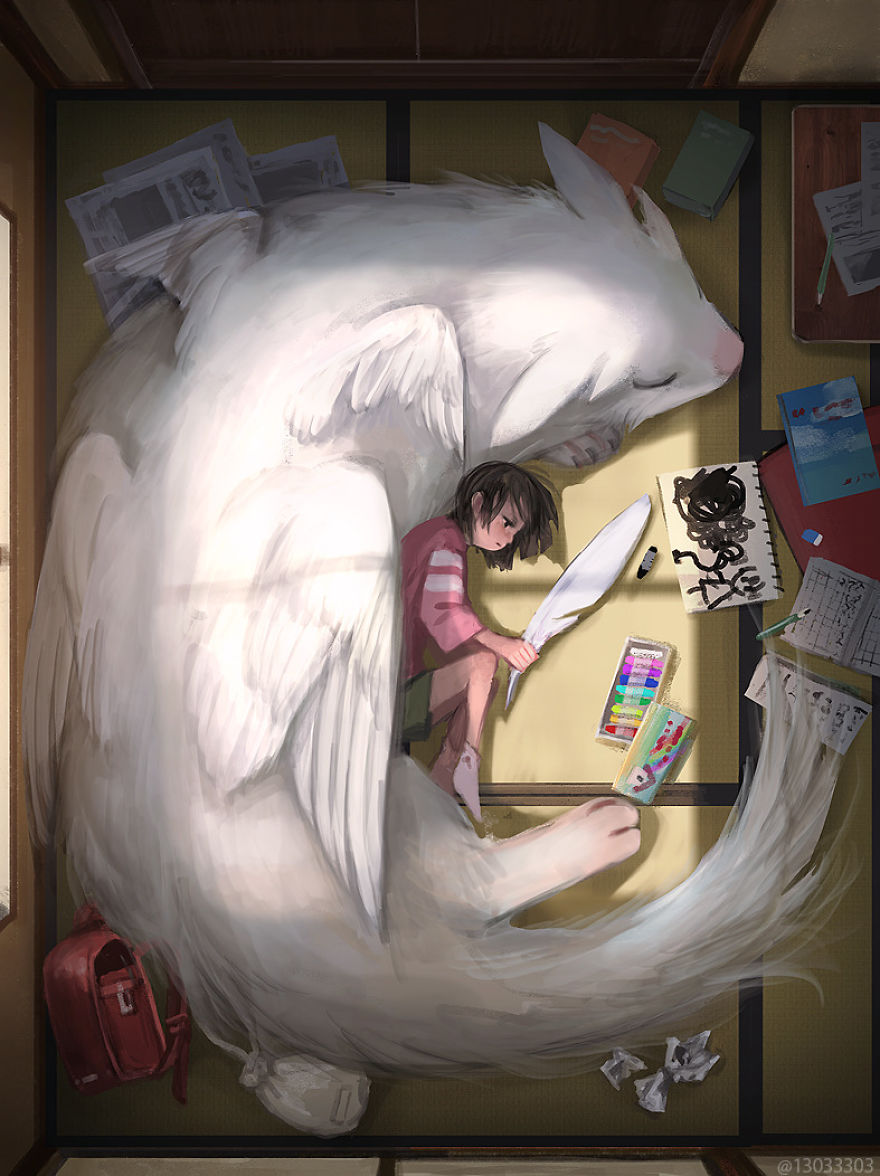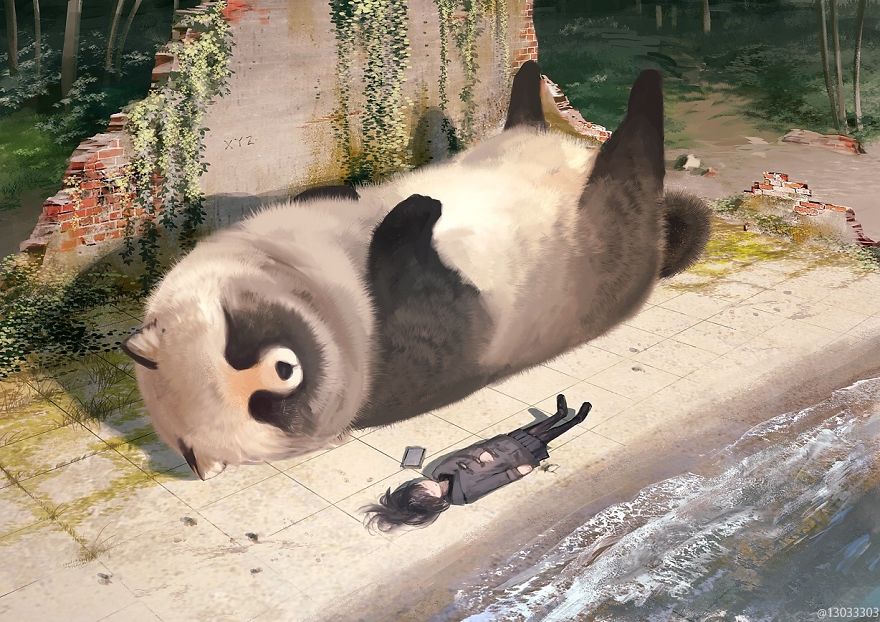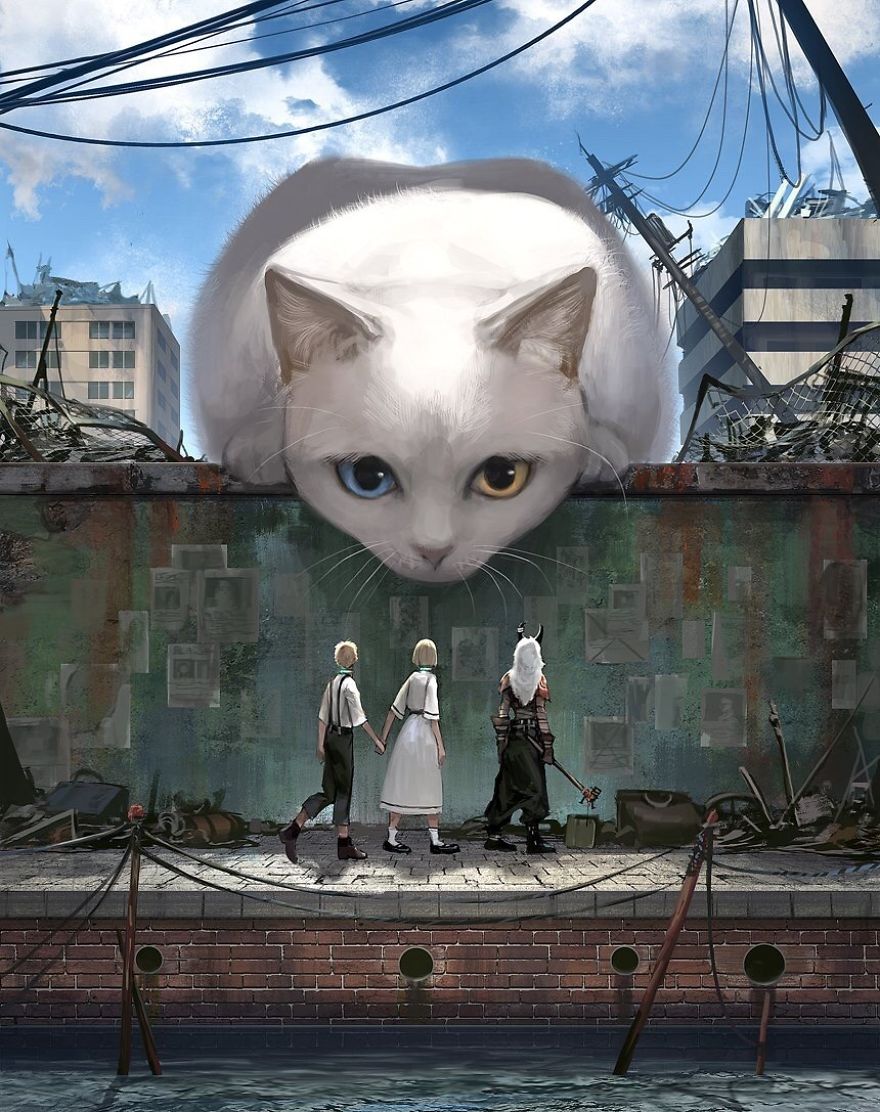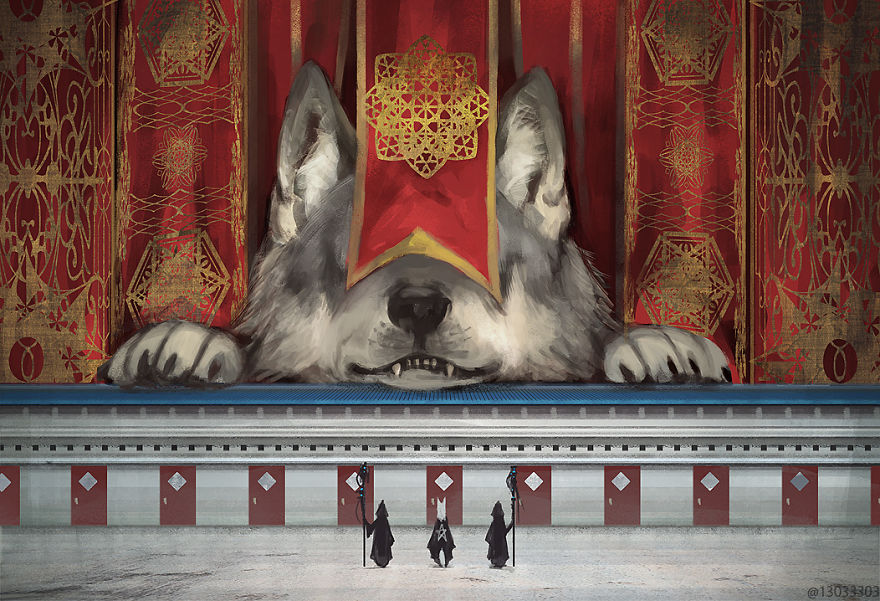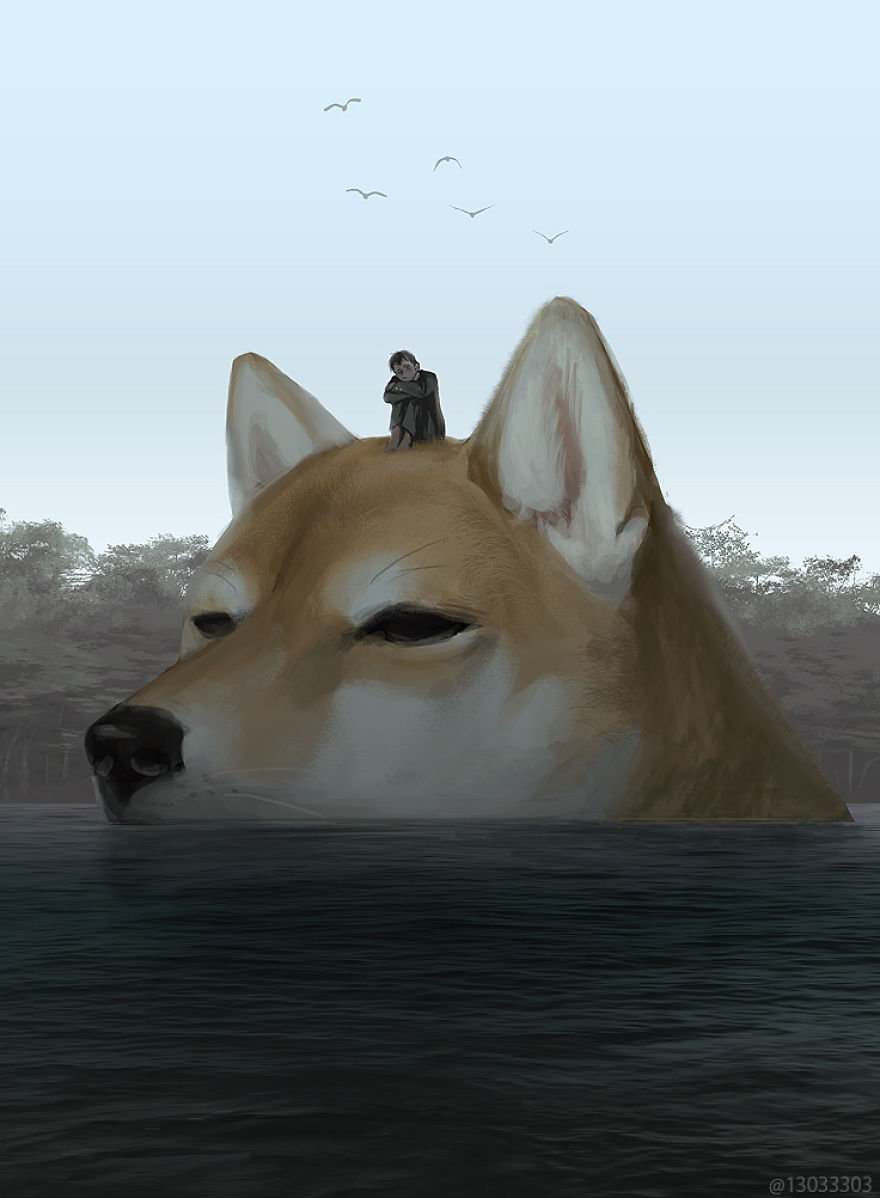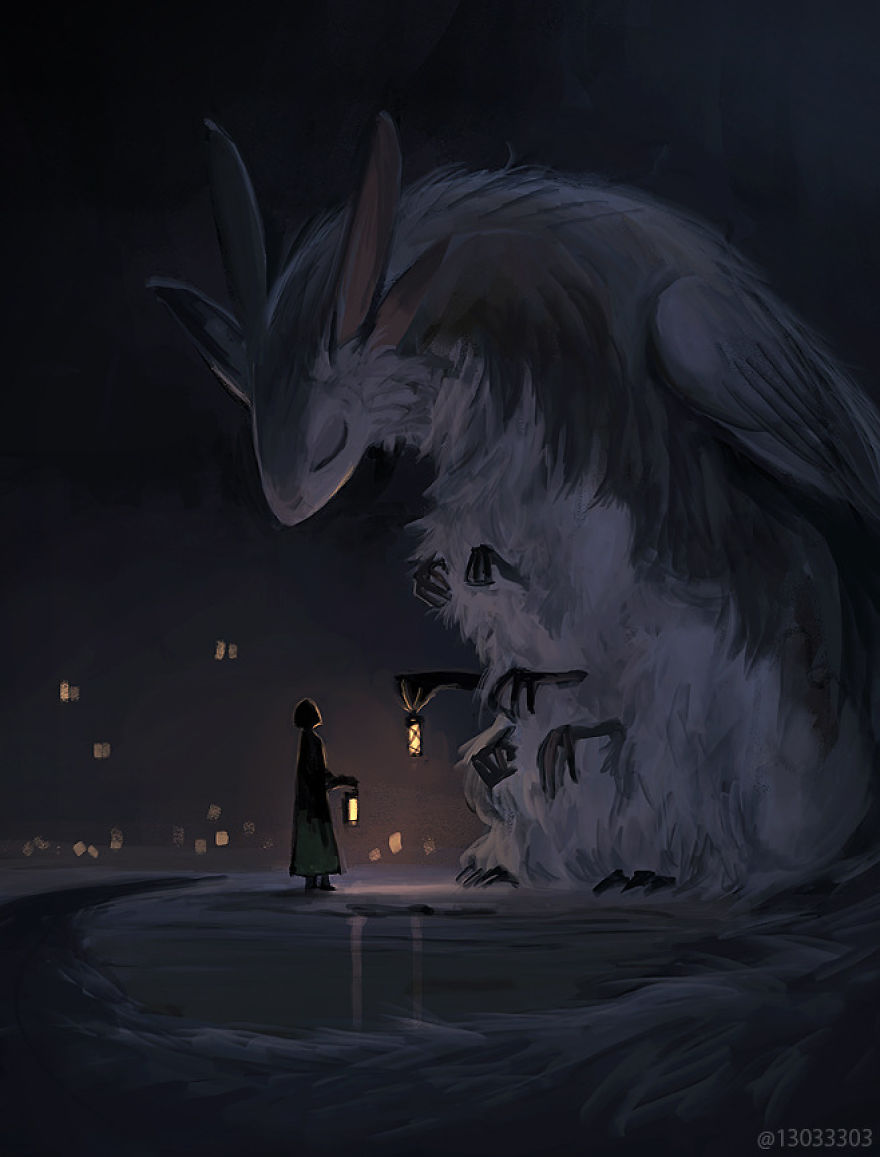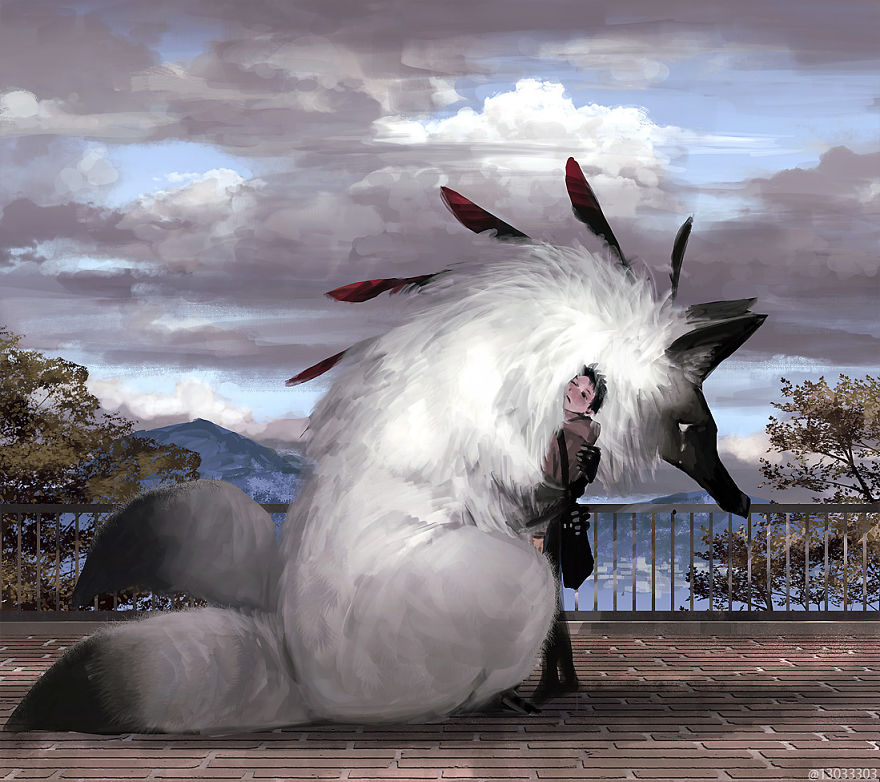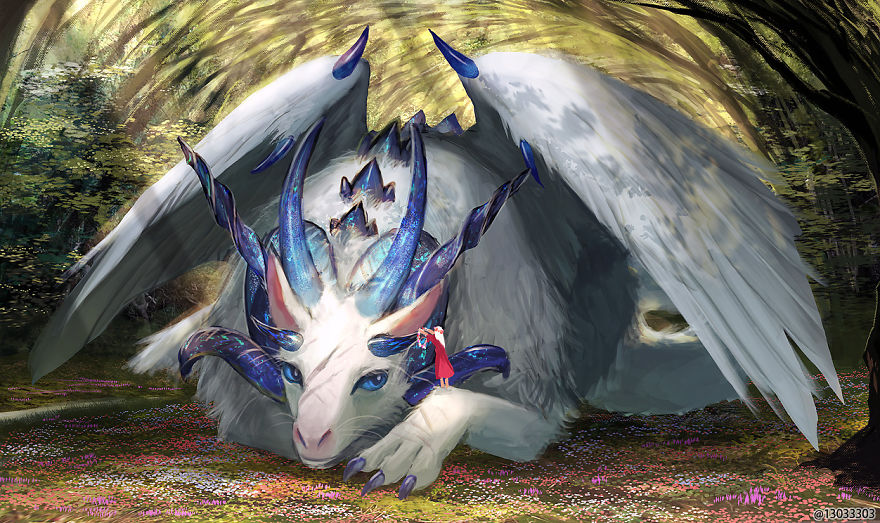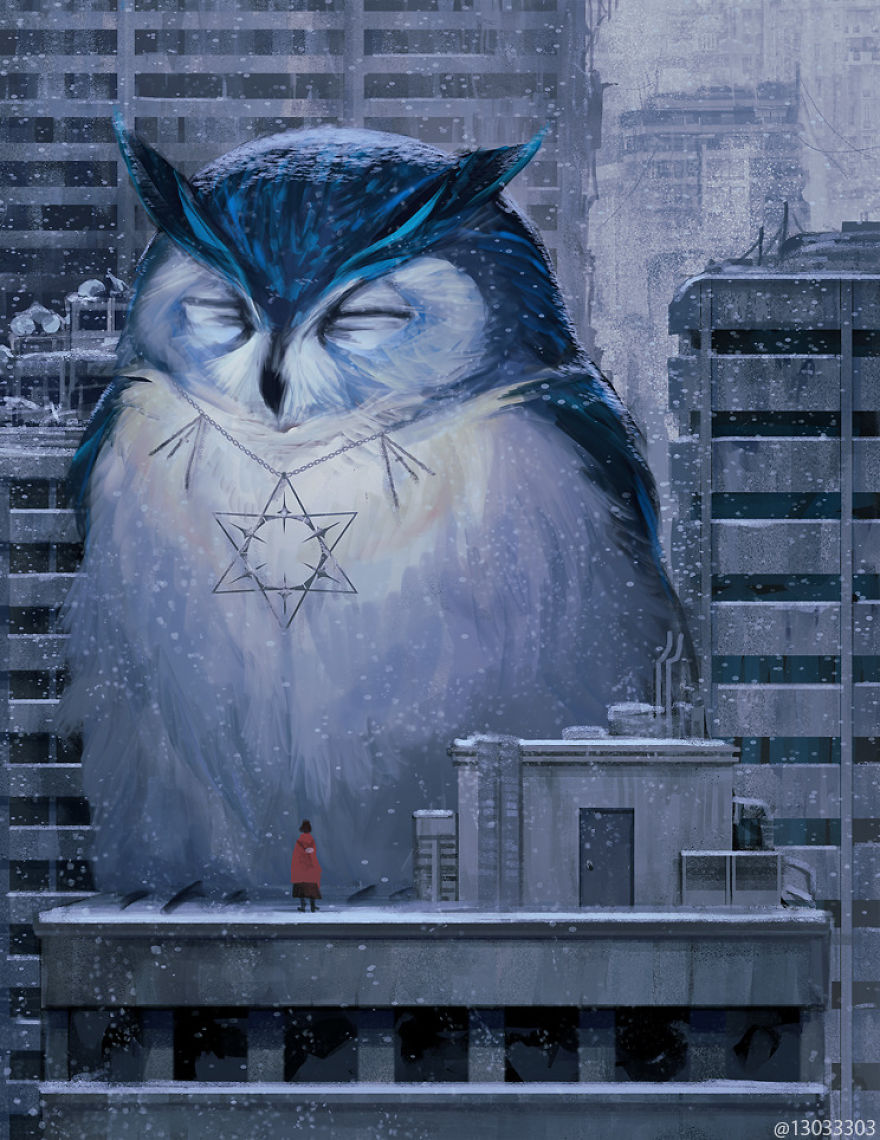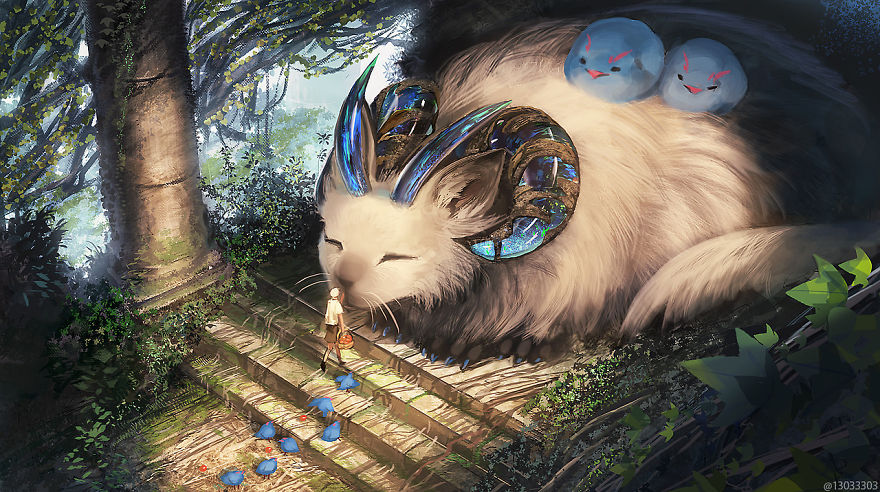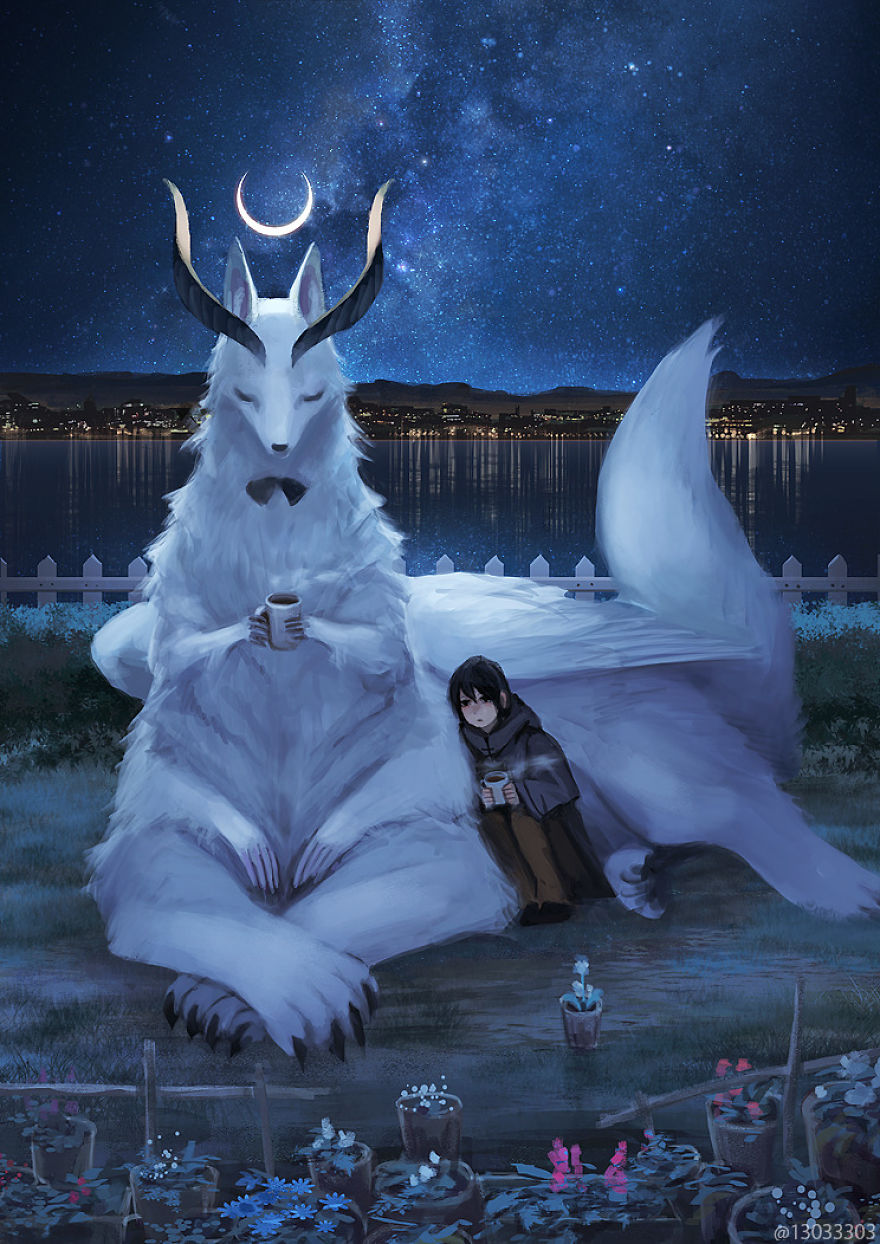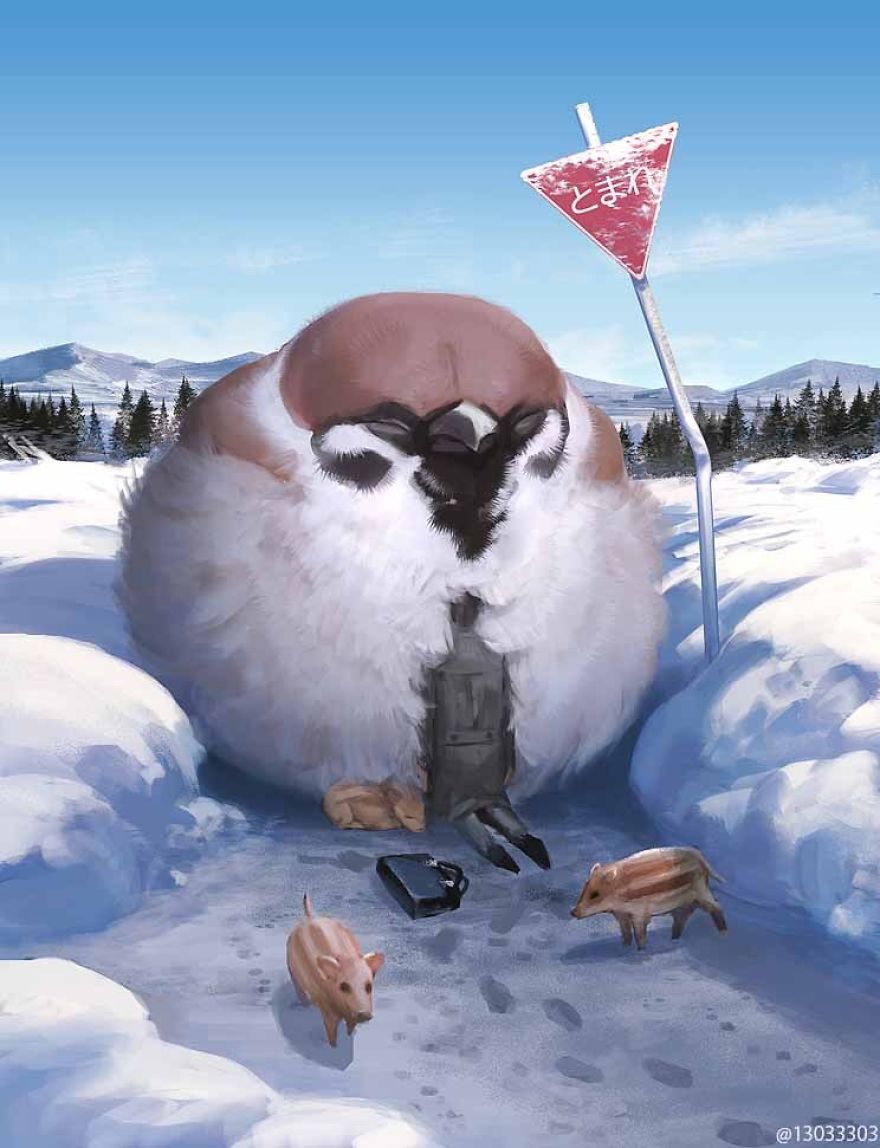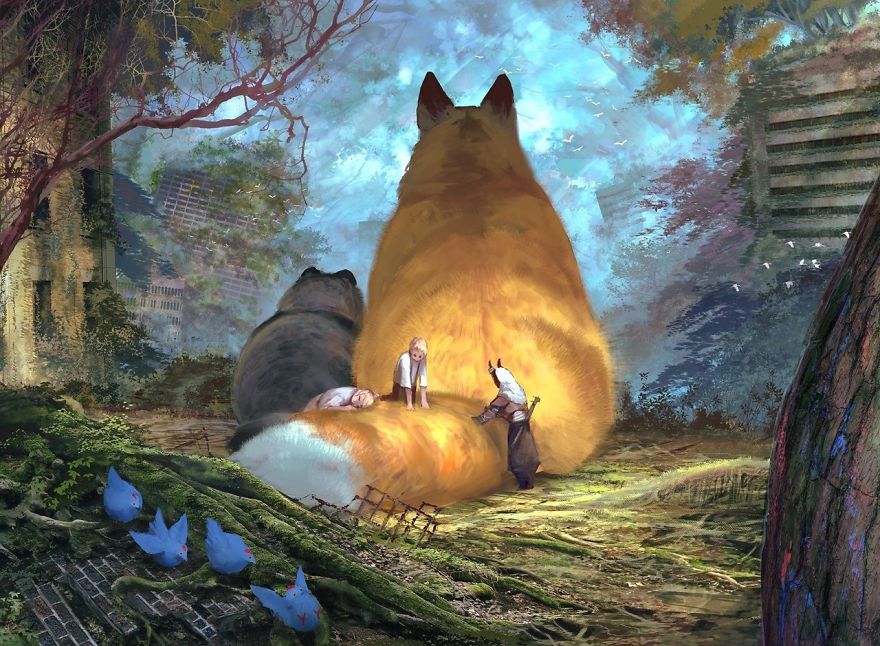This mysterious Japanese artist, who goes by the pseudonym of Ariduka55 or Monokubo on social media channels, creates otherworldly beautiful drawings that breathe life into a completely new fantasy world where giant animals live and evolve alongside humans.
Monokubo is a 24-year-old artist from Japan got an idea of giant animals from Studio Ghibli's anime movies and their famous characters. "It came from "Princess Mononoke" and "Totoro." I liked doing anime drawings in such style since a young age," MonoKubo shared with Bored Panda. The artist finds her inspiration in "Natural landscapes and various illustrations; for example, I like Piotr Jabłoński's work."
It seems the artist likes to indulge herself with illustrations that depict soft and adorable animals - pandas, rabbits, dogs and the like - although, it's pretty evident that the cats are the apples of the artist's eye. The atmosphere in the pictures is almost always ethereal and peaceful, complete with story-telling elements in their compositions that reminds of Japanese mythology. Many of the illustrations are marked with soft sunshine filtering through various objects, including leaves and windows.
Fun fact, the Japanese even have a word for sunlight streaming through the leaves of the trees - komorebi (木漏れ日). It's a term for a light curtain and the shadow it creates on the ground, a term that eloquently describes this everyday beauty.
More info: ariduka55.tumblr.com | pixiv.net | amazon.com
This post may include affiliate links.
This black feline is a show off who likes to put his excellent abilities on display. 'You can't do that, human, can you?' - he says with a challenging look on his face, while making a perfect pyramid formation with a huge ball of cotton and a blue blob of a bird.
"In Japanese mythology, grain farmers once worshipped wolves at shrines and left food offerings near their dens, beseeching them to protect their crops from wild boars and deer. Talismans and charms adorned with images of wolves were thought to protect against fire, disease, and other calamities and brought fertility to agrarian communities and to couples hoping to have children. The Ainu people believed that they were born from the union of a wolf like creature and a goddess."
H/t: The Lost Wolves Of Japan (Brett L. Walker, 2005)
A girl comes back home and uses a HUG card on her cat, but this non-exploding kitten combats the girl's futile attempt at physical contact with a NOPE card of his own.
The Japanese have a daily expression 'tadaima' (ただいま) which is a shortened version of 'I just came home', and while usually it is polite to respond with 'okaeri' (おかえり) i.e. 'welcome home', this giant feline will have none of it.
Of all the ones I've seen so far (57) this one has the most typical cat behavior.
The art of camouflage is on point in this picture. Not only did the black cat become one with nature, it even managed to find a blue blob friend while at it. We are not sure why (perhaps because of the big round eyed), this cat reminds us of Totoro by Ghibli studio.
A world where you can surrender yourself to sleep on a giant ball of fur is a world where you wouldn't be able to get any work done. A perfect world.
Fun fact: did you know that in traditional Japanese architecture, a door, window or room divider made of translucent paper over a frame of wood is called shōji? It probably all comes down to the Japanese love for minimalism, for the purpose of shōji doors is to slide open, and thus conserve space that would be otherwise required for a swinging door.
A tranquil and slightly gloomy part of the series featuring a Korean crow-tit (Baepsae). There is a common idiom/saying: 'the crow tit will break its legs trying to walk like a stork', which, in its simplest form, means pretending to be something you are not.
This looks straight out of a science-fiction movie where the main protagonist is a stray cat looking for a place to call home. For months, locals have tried to lure the kitten out of his hiding place promising toys and treats. 'Look, this ain't a laser pointer, but at least it's shiny.'
A peaceful autumn afternoon at the shrine saturated with both color and falling leaves.
Although it might be hard to tell, the animal depicted in this particular illustration is not your regular raccoon. In fact, this is Tanuki (or a raccoon dog), an atypical species of dog that can grow up to 60 cm in length, with distinctive stripes of black fur under its eyes. Unlike a raccoon, tanuki has a roundish nose, small floppy ears, short and furred paws for running, and a tail that is not ringed.
Originally an evil trickster and spook in Japanese folklore, Tanuki is now a benevolent modern-day symbol of generosity, cheer and prosperity.
An unlikely hero was on his way to slay a villainous wizard, when suddenly a wild menacing fur ball of shadow crossed his path. Contrary to much of the Western world, Japanese culture sees a black cat crossing your path as a good omen. In fact, black cats are generally seen as good luck in Japan and much of Asia.
The fox plays a role in Japanese culture that's unusually rich and complicated. Beliefs that developed when people lived much closer to nature persist in stories, festivals, and language. Even in these rational times, the fox has a magical aura that still lingers.
The fox is associated with Inari as a symbol, a messenger, a servant, or maybe more. Inari is the Japanese god of foxes, of fertility, rice, tea and sake, of agriculture and industry, of general prosperity and worldly success, and one of the principal gods of Shinto.
H/t: tofugu.com
Yet another tribute to the sound sleep on the clouds of fur. How did this girl get a fox inside the school?
Trivia time: foxes are one of the most revered animals in the Japanese tradition and folklore. Kitsune (狐 or きつね) is a Japanese word for 'fox'. They are often the subjects in stories that depict them as intelligent beings with supernatural powers. According to Yōkai folklore, kitsune has the ability to shapeshift into a human form. While some folktales speak of kitsune employing this ability to trick others—as foxes in folklore often do—other stories portray them as faithful guardians, friends, lovers, and wives.
One of the more famous elements in Asian folklore is the Moon rabbit. It's a myth based on pareidolia that identifies the markings of the Moon as a rabbit. Although it originated in China, the myth eventually spread to other Asian cultures as well.
Fun fact: the civilian name of the infamous character Sailor Moon by Naoko Takeuchi is actually Tsukino Usagi which, you guessed it right, means - 'the rabbit of the moon'.
"Japan perceives the butterfly to be a ‘soul of the living and the dead’, as a result of the popular belief that spirits of the dead take the form of a butterfly when on their journey to the other world and eternal life. The butterfly is also often used as a symbol for young girls as they spread their wings and emerge into womanhood, as well as it being believed to symbolise joy and longevity."
H/t: thejapaneseshop.co.uk
A white feline hiding from the afternoon's sun behind the curtain of draping flowers.
Japan is full with wonderful landscapes, but there is one place in particular where you can take a magnificent walk through the pastel-colored passageway of wisteria flowers at the Kawachi Fuji Gardens in Kitakyushu. The gardens are home to about 150 Wisteria flowering plants spanning 20 different species (white, blue, purple, violet-blue and pink).
Just gorgeous. Kitty is trying to play "If I can't see you, you can't see me"
A surreal image featuring a reoccurring protagonist - the blue blob. We can't decide what we love about this picture the post - the scattering sakura blossoms, or the fact that this cat sports a pair of magnificent blue horns.
In the folklore, tanukis were known to be masters of illusion. They could shapeshift into any form of their liking - anything from an old bedridden woman to a bottle of white wine. Once in disguise, they would use little rhymes to lure people into their games, and although not harmful, they tended to end in some inconvenience or embarrassment.
If you slightly squint your eyes, you can notice that this is no ordinary hill, in fact, it's no hill at all.
The Shiba Inu breed is Japan's one of the most cherished treasures. Literally meaning 'the brushwood dog' these dogs were traditionally used for hunting small animals, and nowadays, Shiba Inus are very popular in pop-culture.
H/t: japanesecreations.com
Yet another beautiful composition featuring familiar elements - the cat, the girl, and the soft sunlight streaming through the window.
Historically, cats have been revered in many societies, and particularly in the Japanese culture the furry felines are highly regarded as symbols of good luck. The popular Japanese cat figurine maneki-neko (招き猫, 'beckoning cat') is typically believed to bring about blessings. The figurine is often of a cat with its paw in an upright position as if beckoning.
According to Japanese legend, a landlord witnessed a cat waving a paw at him. Intrigued by this gesture, he came close to the cat when suddenly a lightning bolt struck the exact place he was previously standing in. The landlord believed that his good fortune was because of the cat’s actions. Hence, the beckoning hand became a symbol of good luck.
H/t: kcpinternational.com
My little sister wants cat like that... I can imagine her in this picture...
I'm not sure what this is but it's so sad and I want to cry even though I don't know what is happening... And what is that sticking out of it's back?
A sleepy guardian braving itself against the cold blanket of winter.
It's not unusual for the Japanese to carry an owl charm with them, because just like cats, owls are the symbols of good luck, who also offer protection from suffering. In different parts of the country, they have also historically been given a variety of other attributions, for example, the guiding bird or a bird which can predict the weather.
H/t: owlcation.com
Inoshishi (the boar) is part of the Japanese culture and mythology. It is one of the 12 Chinese zodiac symbols. In the past, the boar was called yamakujira, meaning "the whale of the mountains." It is still considered a dangerous animal, that sometimes attacks people and damages crops. It appears in the Japanese folklore, as the boar gods in "Princess Mononoke" or as Inosasao - the boar with the back covered in bamboo leaves.
H/t: dailyglimpsesofjapan.blogspot.com
Reminds me of Princess mononoke. Like Okkoto is carrying the ironworks of his back.

 Dark Mode
Dark Mode  No fees, cancel anytime
No fees, cancel anytime 




